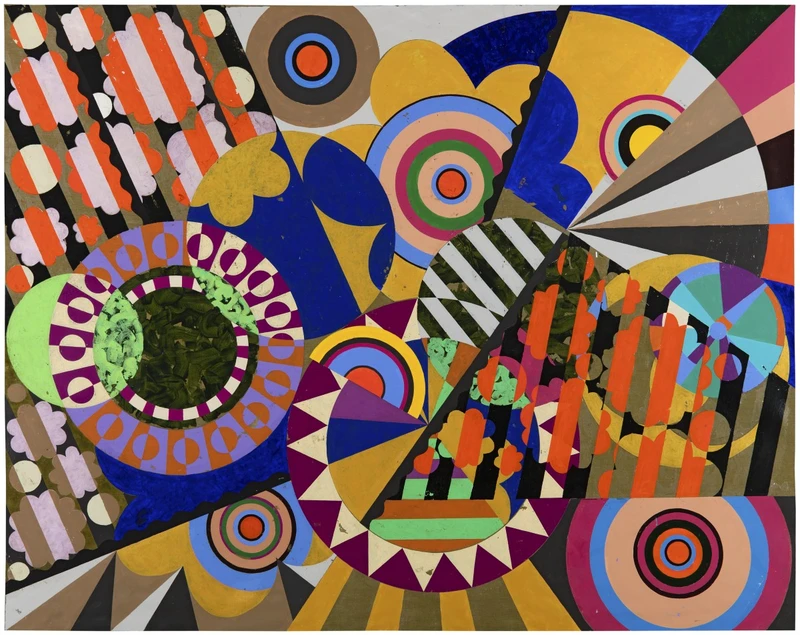Beatriz Milhazes


b. 1960, Brazil
Brazilian artist Beatriz Milhazes's practice includes painting, drawing and collage. Characterised by sensual colour, optical movement and energetic visual cadences, her abstract work fuses a diverse repertoire of images and forms. Combining elements from her native Brazilian culture with European abstraction, her colourful, densely layered works are held in a state of tension, balanced carefully between order and chaos, rational structure and spontaneity. Often pushed to their compositional limit, with cascading, proliferating forms overlaid across the canvas, her paintings seem at a point of collapse, ready to engulf the viewer in an explosion of form and colour.
Part of a generation that emerged in the 1980s from Brazil, who enjoyed a return to painting after the art of the 1970s, Milhazes has said “I am an abstract painter and I speak an international language, but my interest is in things and behaviours that can only be found in Brazil”.
Influenced by early Brazilian artists, in particular the work of Tarsila do Amaral, as well as Matisse, Op Art and Mondrian's late work, Milhazes combines depth, relief, and contrasts of form, texture and space her pictures. As Paulo Herkenhoff has noted, her work “addresses truth criteria, fallacy, simulation, representation, geometric inexactitude, hybridism, false glitter, synthetic materials, botanical inaccuracy, shifting titles, and entropy”. Her distinctly Brazilian, vernacular palette and unique motifs reflect a fascination with 'Carnaval' and the print designs of popular fabrics, as well as Baroque colonial architecture, Brazil's tropical flora, its ceramic tiles, costumes or jewellery. These influences leak into the paintings and emerge as a colourful amalgamation of visual indexes that are able to syncopate high and low culture, art and craft. “I need to use some elements that don't really come from the painting world” she has said; ”...they are in some sort of conflict that will never really end up anywhere. They are not peaceful surfaces.”
Built on the principle of collage, Milhazes employs a decal technique in her painting whereby images are painted on sheets of plastic and then applied to the canvas by a transfer process, creating a smooth surface which nonetheless reveals the process of its own construction. At times, the paint tears or remains stuck and these torn and exposed elements create points of erosion which give the impression of the canvas condensing multiple layers of time in one image. This process of image superimposition and intersections results in compositions that incorporate a sense of entropy or transformation. For example, the circle motif can spiral into a bull's-eye target, then revert into a piece of crochet or lace, creating what the artist has called a geometry of “feminine overstatements” which points to an association with crafts traditionally done by women such as lacemaking, sewing and beadwork. Likewise, in her paper collages, Milhazes overlays an array of various colourful papers such as wrapping paper, candy-wrapper paper, marbled paper and chocolate wrappers, to create compositions with a proliferating, ornamental patterning that keeps the eye moving restlessly across the image surface.
Beatriz Milhazes was born in 1960 in Rio de Janeiro where she lives and works. She has had numerous solo exhibitions including Pérez Art Museum, Miami (2015); Centro Cultural Paço Imperial, Rio de Janeiro (2013); Museu Oscar Niemeyer, Curitiba, Brazil (2013); Museo de Arte Latinoamericano de Buenos Aires (2012); Calouste Gulbenkian Foundation, Lisbon (2012); Fondation Beyeler, Basel, Switzerland (2011); Fondation Cartier pour l’art contemporain, Paris (2009); and Pinacoteca do Estado de São Paulo (2008). In 2003 she represented Brazil at the 50th Venice Biennale.
To find out more about Beatriz Milhazes visit www.beatrizmilhazes.com